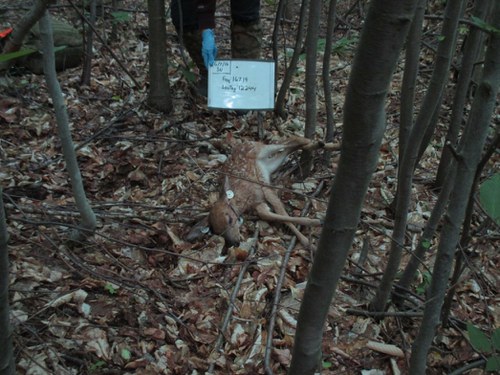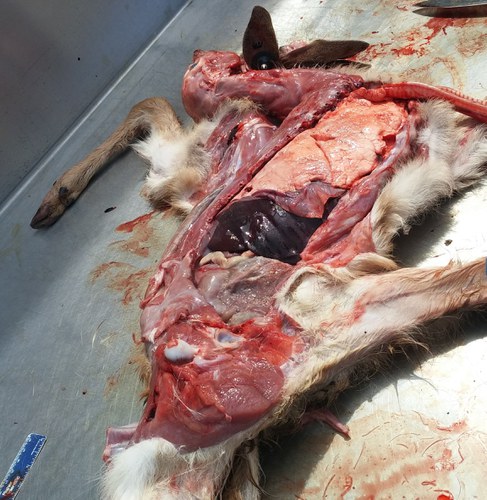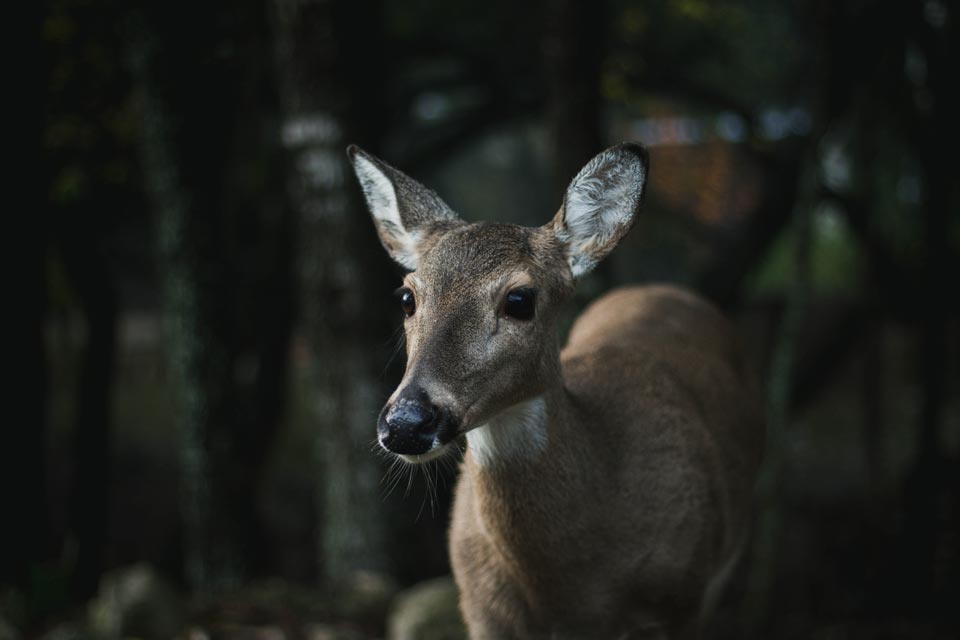Think you know your deer? Do you love CSI? We love both of these things.
Recently we have been discussing causes of death of our fawns (and last year we shared some insights into how we determined cause of death).
So how do we decide who is to blame after a fawn dies? Was it Mother Nature, a mom who abandons her baby, a predator in the night, or some other cause?
Once our field crews are aware of a possible mortality they pack up their cameras, DNA swabs, and gloves. Just like on CSI they photograph the crime scene before disturbing the body in case we need to review the evidence.

Once the photographs are taken the team moves in to collect any evidence of what might have occurred. If it appears there is a bite wound, a swab is taken from the area in order to collect saliva DNA. Any disturbances in the surrounding area are noted including what feces, hair, or potential predator tracks are detected. Every detail is written down, and evidence is collected and bagged.
So then what? DNA samples of possible predators are sent to a lab to get identified.
In the meantime all the bodies are examined during a necropsy day!
During the necropsy day each fawn is examined thoroughly by the PGC vet Dr. Justin Brown and careful notes are taken about any parasites, irregularities, or wounds on the fawn that might give us an indication as to what killed it.
 Recovered carcasses are necropsied to find additional clues to help determine cause of death. Once the carcass has been examined for external and subcutaneous injuries the rib cage is removed to begin examination of internal organs.
Recovered carcasses are necropsied to find additional clues to help determine cause of death. Once the carcass has been examined for external and subcutaneous injuries the rib cage is removed to begin examination of internal organs.
First, the fawn is examined externally to identify any obvious wounds that may point to the cause of death, such as punctures, bite wounds, scratches, etc. Then the skin is removed to look for any pooling of the blood, associated fractures, tears in the tissues, etc.
All wounds are documented and measured, as these may provide clues as to whether predation caused the death of the fawn and what predator may have been involved.
Once this has been done, and information recorded, our investigation moves onto the body cavity. Piece by piece we remove organs such as esophagus, stomach, liver, and intestines to examine them for more clues.
We can determine whether an injury to the fawn was before or after death by looking at wounds and associated bleeding. Pooled blood is associated with wounds that occur prior to death because blood is still flowing.
If there is a wound and no pooled blood it leads us to believe the wounds occurred after death and might just be a scavenger feeding on the carcass.
Using field notes, evidence from necropsies, and the later results of DNA swabs we can then determine a cause of death.
So how well would you do at identifying cause of death? We have created a short online “quiz” to test your knowledge! It’s all in fun – enjoy the holiday weekend and we’ll provide the answers and share how well our readers did on the quiz next week!
Click on this link to take the quiz. After you have finished you can go here to find the answers!
-Tess Gingery
M.S. graduate student
Department of Ecosystem Science and Management
Pennsylvania Cooperative Fish and Wildlife Research Unit
Subscribe to the Deer-Forest Blog by email
And Follow us on Twitter @WTDresearch
